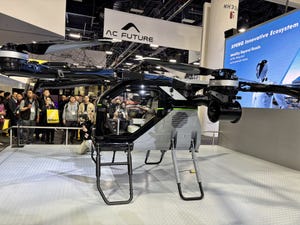Study Finds Drivers Distracted by Automated Technology
Insurance Institute for Highway Safety study examined how often drivers engage in non-driving activities on highways while using automated tech compared to unassisted driving

Worrying new research suggests drivers in cars that offer partial automation are more likely to be distracted at the wheel.
That was the key finding following a study conducted on behalf of the Insurance Institute of Highway Safety.
Even more alarmingly, the research revealed that some drivers even managed to perform other tasks – such as eating or checking their phones – while apparently satisfying the "driver monitoring" tech of the vehicles they were in.
The study consisted of two separate pieces of research, the first focused on the behavior of 29 volunteer drivers in a 2017 Volvo S90 with Pilot Assist tech, which helps vehicles maintain a set speed and stay in their lane. The drivers were required to keep their hands on the steering wheel at all times.
For more self-driving car and other embedded tech news subscribe to our free newsletter!
The study aimed to establish “how likely drivers were to engage in non-driving activities when using the automation on highways relative to driving unassisted” and also assess if this changed over time.
The results were conclusive: the percentage of time drivers were distracted while using it was, as the IIHS described it, “exceedingly high,” at more than 30% – with most drivers getting more distracted the more often they used the tech.
This, the IIHS said, backed up a study it conducted in 2020 that suggested drivers get more complacent and lose focus as they become accustomed to such tech.
The second element of the new research centered on Tesla’s Autopilot software, and looked at how attitudes changed among those who had never previously encountered it, or any other partial automation tech, over a month of driving a 2020 Model 3.
Specifically, it sought to find out how often the drivers triggered the car’s reminders to pay attention, which on this car were issued when a torque sensor on the steering wheel failed to detect the driver’s hands on it.
In total, 3,858 warnings were issued over more than 12,000 miles, with most drivers responding within three seconds to indicate they were engaged. Failure to do so resulted in an escalation of the alerts, with the ultimate sanction seeing Autopilot deactivated.
Tellingly, the number of warnings consistently rose on a weekly basis over the test period, with the number of escalations falling at the same time.
IIHS President David Harkey explained the results’ significance. He said: “These results are a good reminder of the way people learn. If you train them to think that paying attention means nudging the steering wheel every few seconds, then that’s exactly what they’ll do.
“In both these studies, drivers adapted their behavior to engage in distracting activities. This demonstrates why partial automation systems need more robust safeguards to prevent misuse.”
The study’s lead author, IIHS Senior Research Scientist Alexandra Mueller, added: “These results show that escalating, multimodal attention reminders are very effective in getting drivers to change their behavior. However, better safeguards are needed to ensure that the behavior change actually translates to more attentive driving.”
Tesla, in particular, has faced constant scrutiny from regulators over whether it does enough to prevent misuse of its driver-assistance tech. In April, the National Highway Traffic Safety Administration said it was looking into just how effective a recall of two million Teslas in December had been, amid concerns that “Autopilot’s system controls and warnings were insufficient for a driver assistance system that requires constant supervision by a human driver.”
About the Author
You May Also Like








